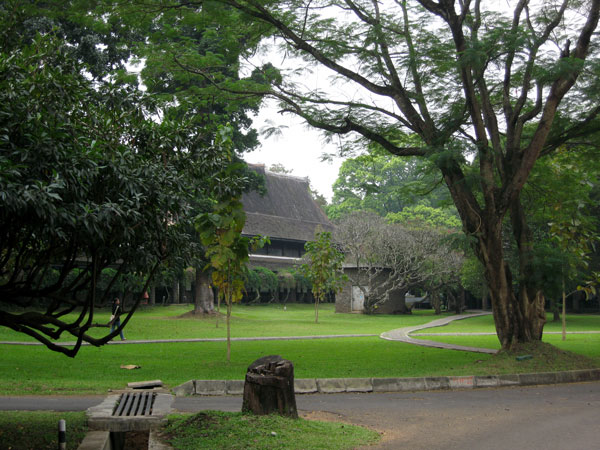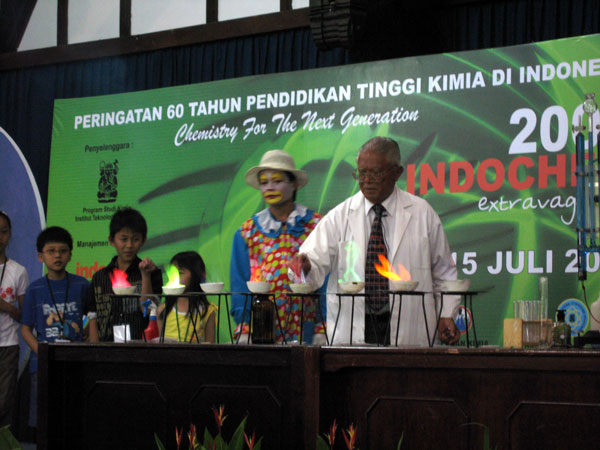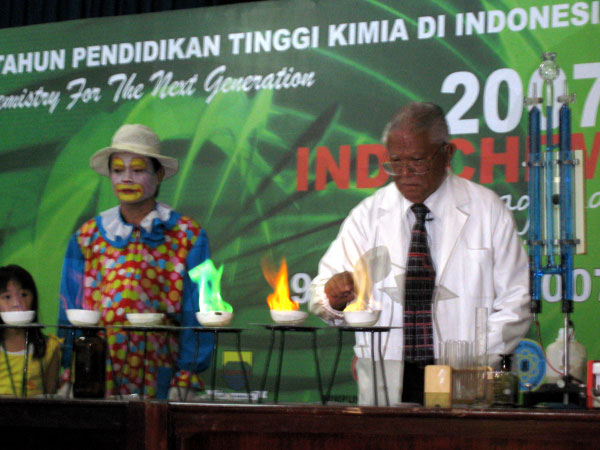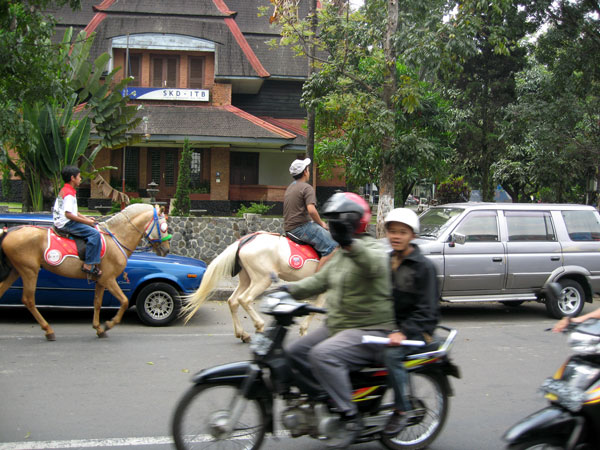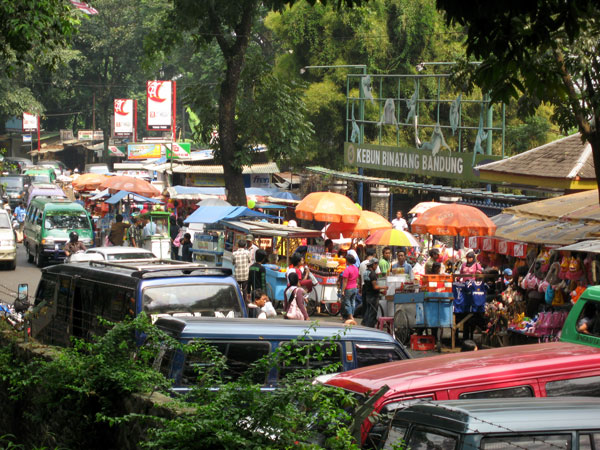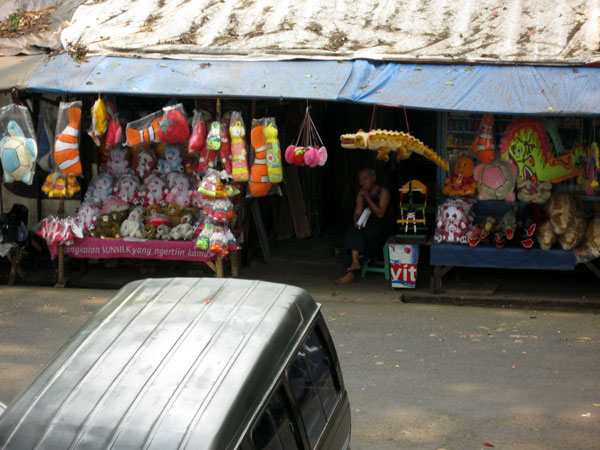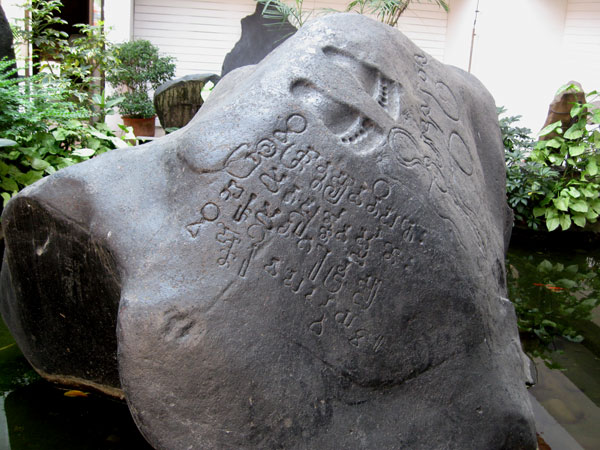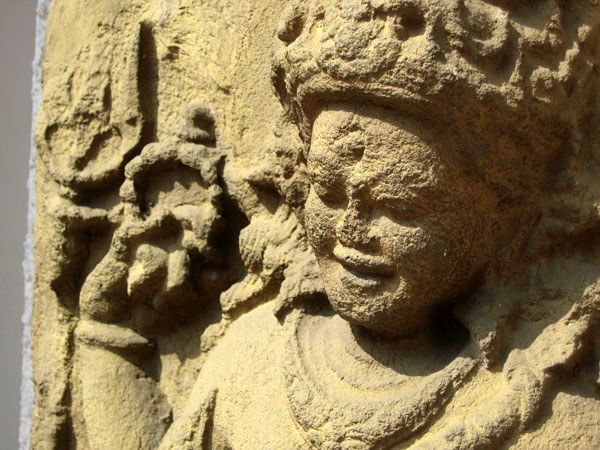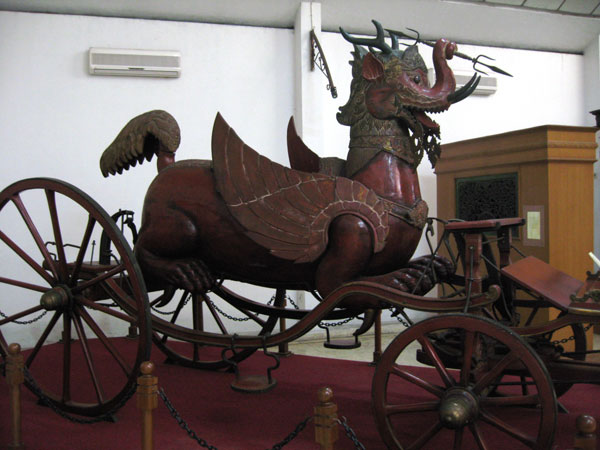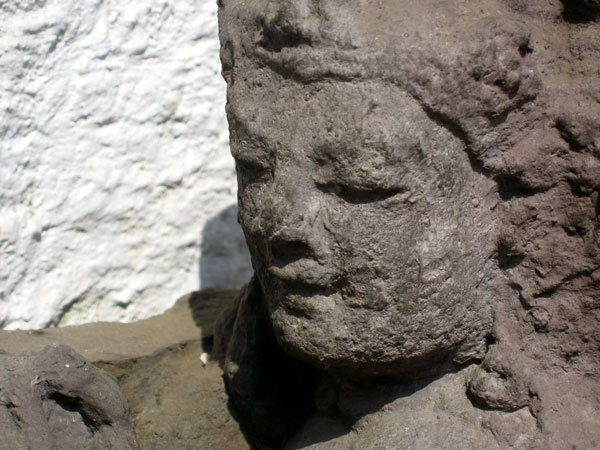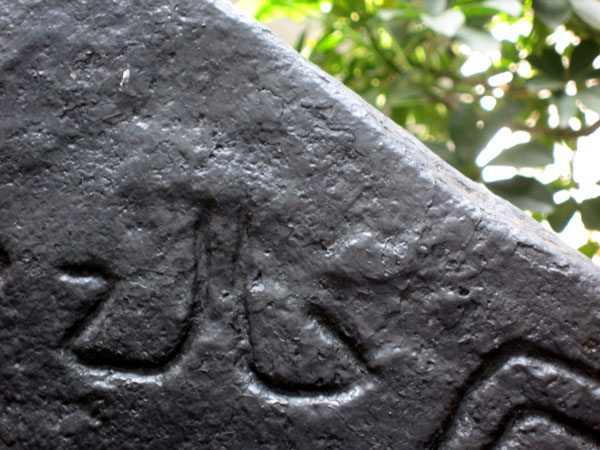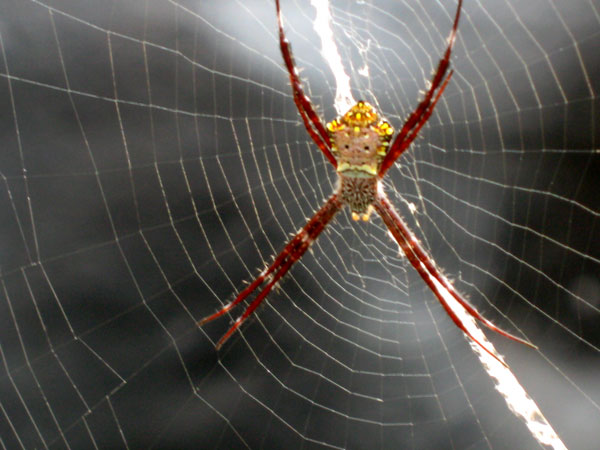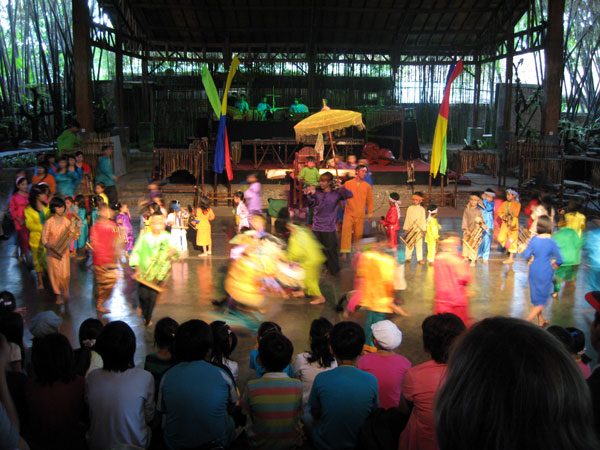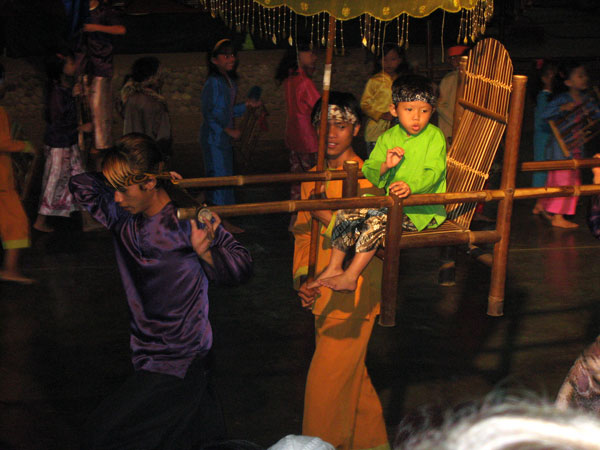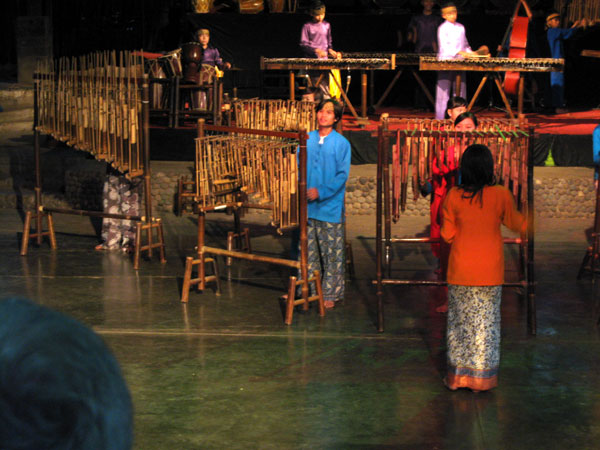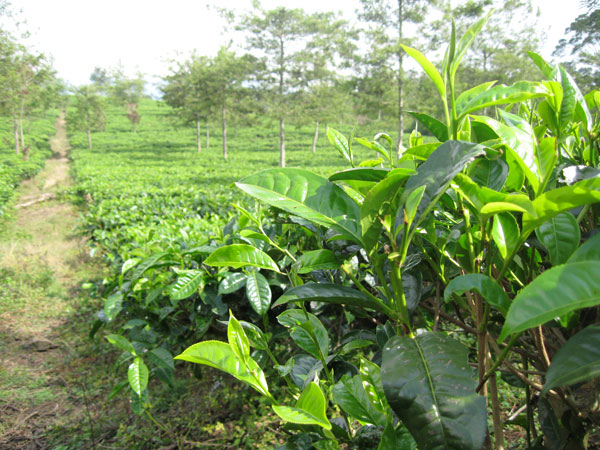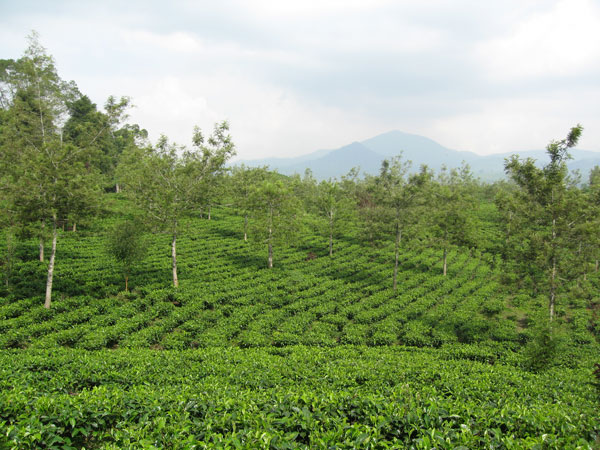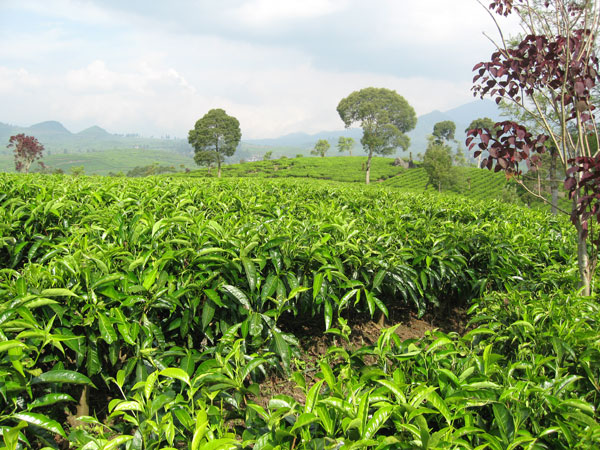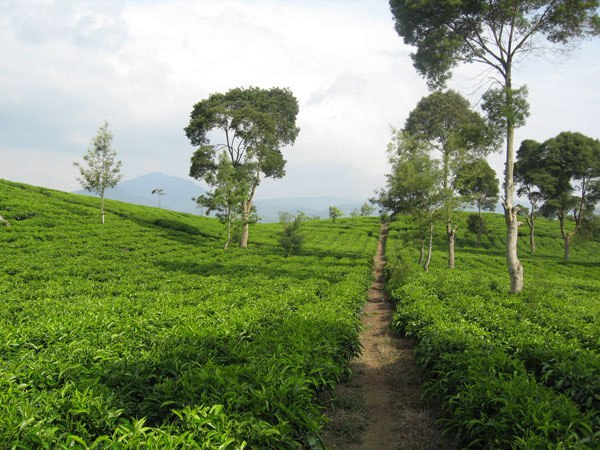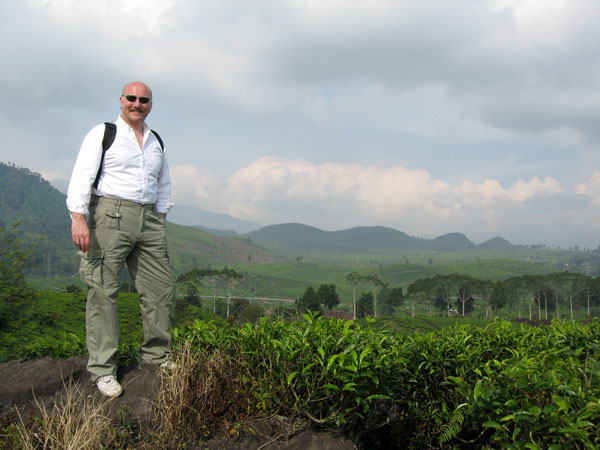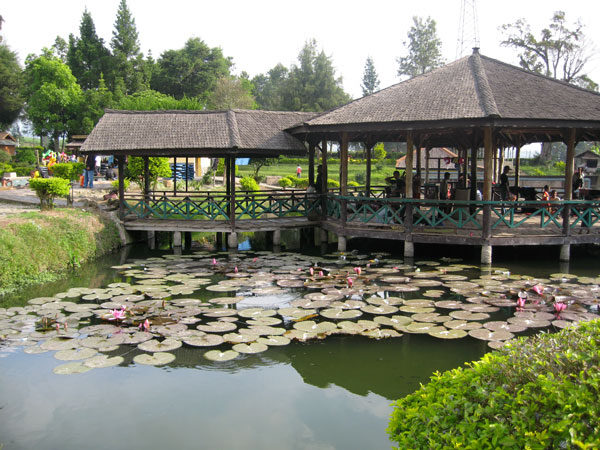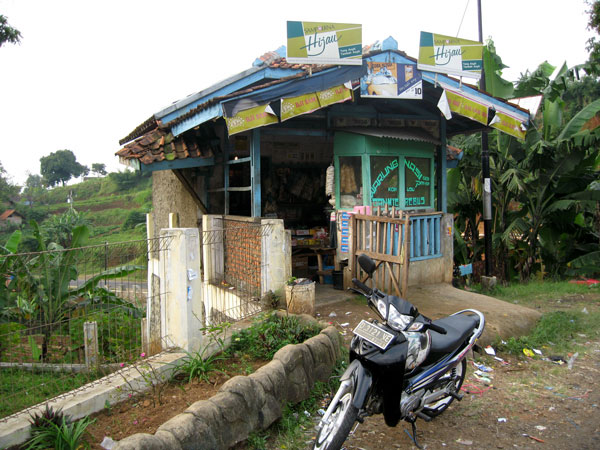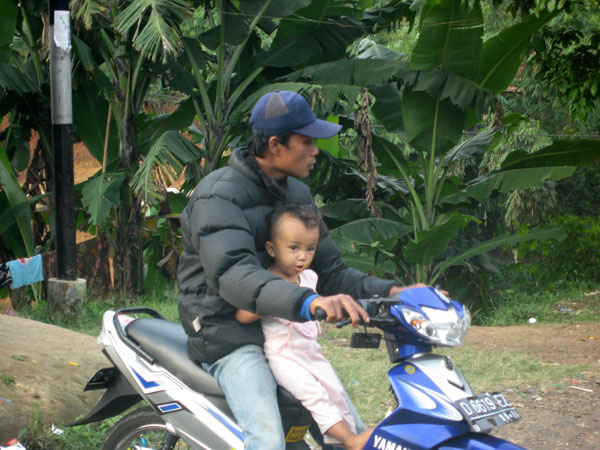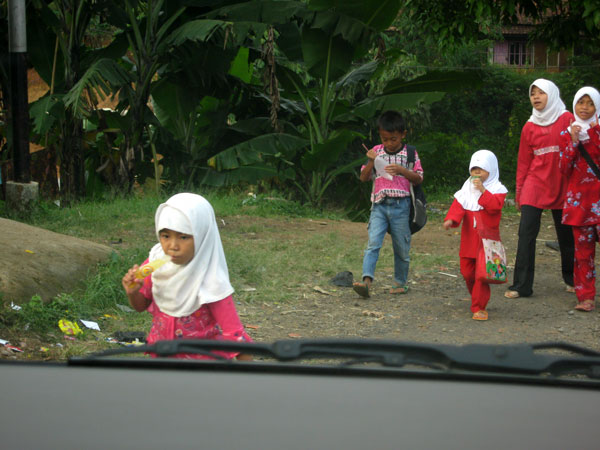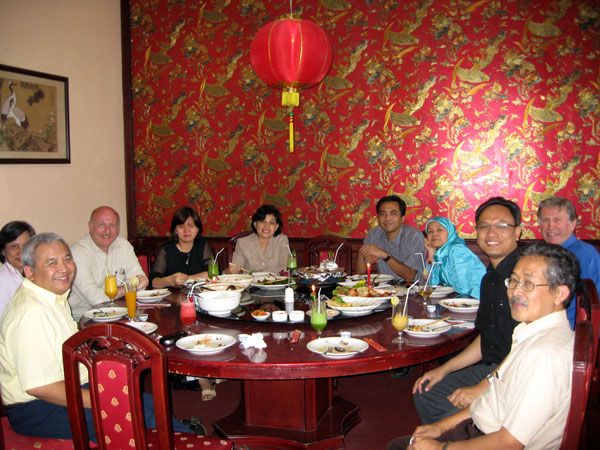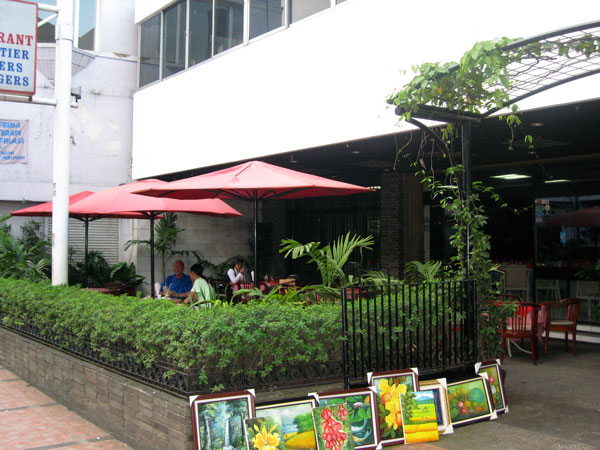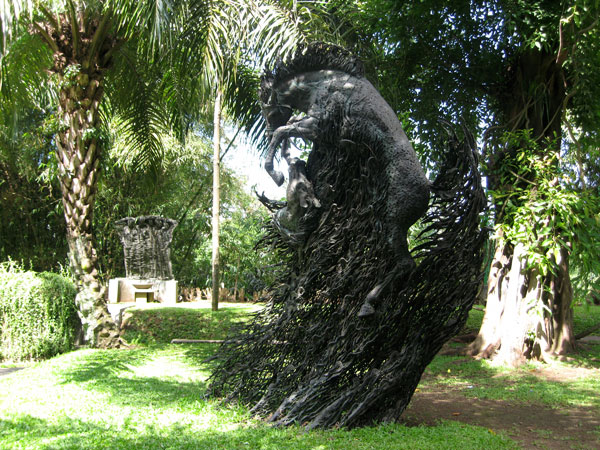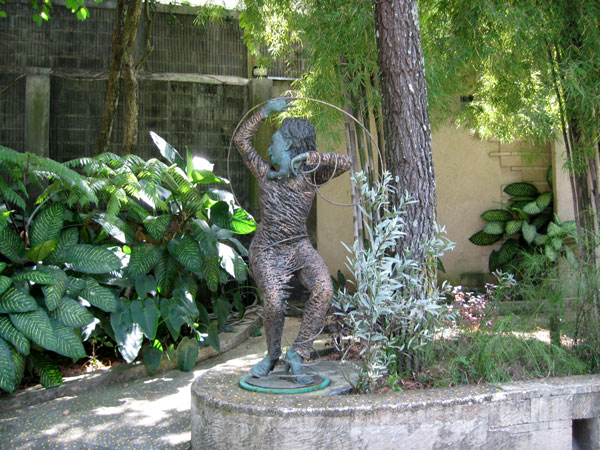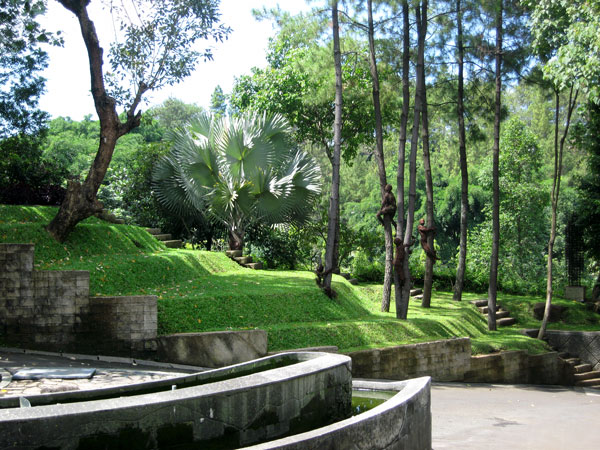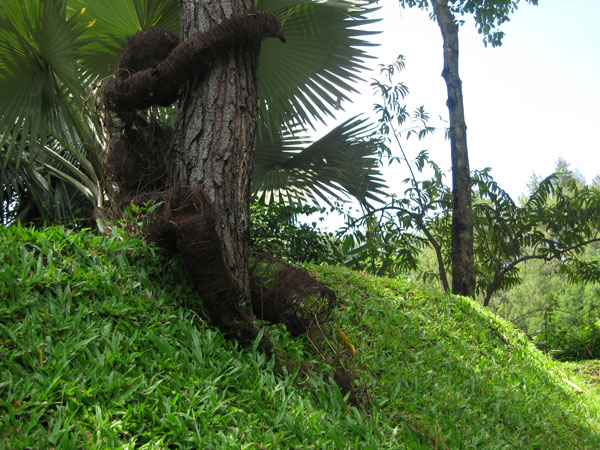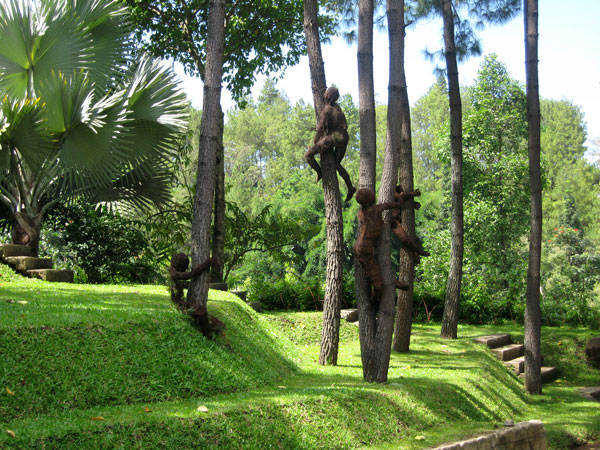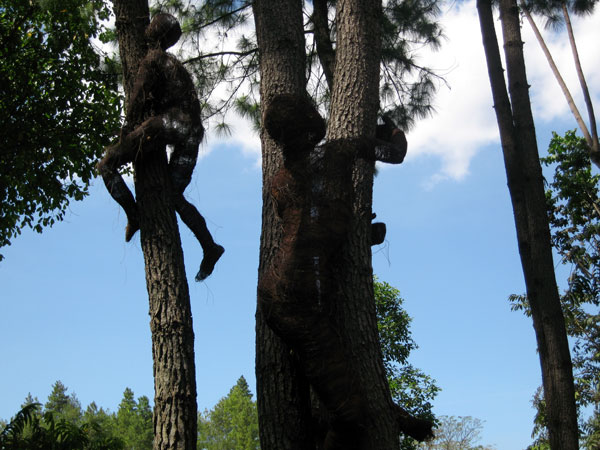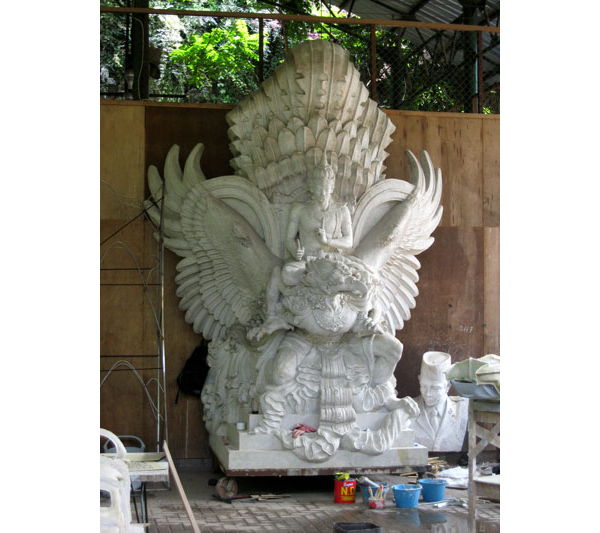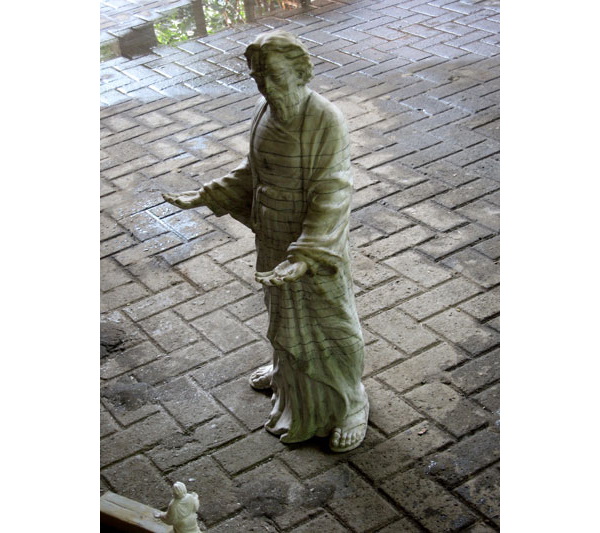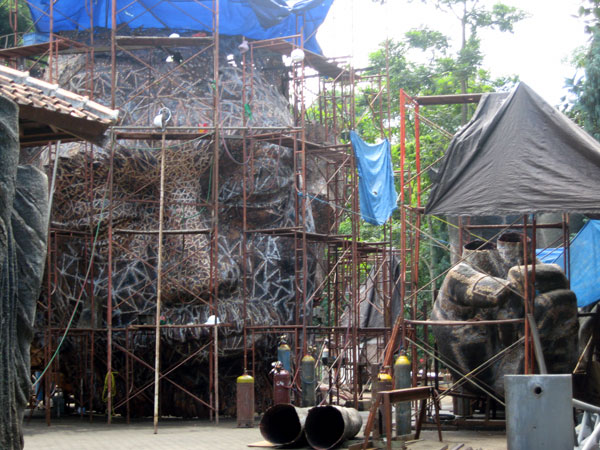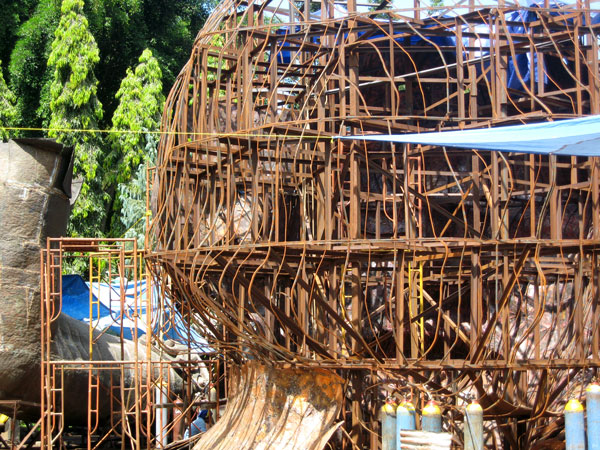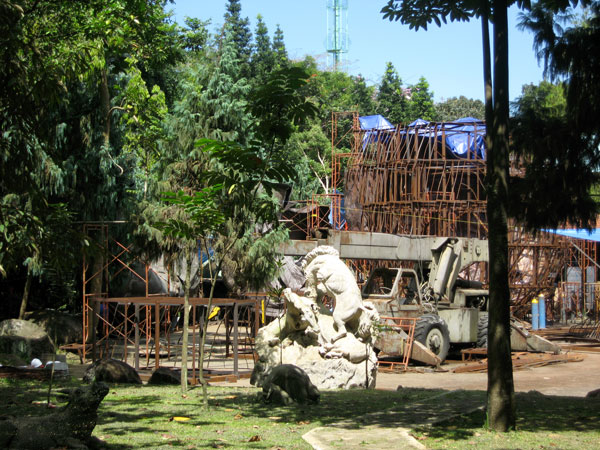Indonesia - the Bandung area of East Java
July 5 - 23, 2007
Here is the campus of the Institute of Technology of Bandung (ITB), located on the island of Java in the country of Indonesia.
I'm here as a Fulbright Senior Scholar to consult with the chemistry departments of Indonesia on matters of education.
The first week, I gave the opening and closing addresses at the IndoChem 2007 conference, celebrating 60 years of chemistry in Indonesia. I also participated in led two workshops related to some specific topics. In the second week, I am consulting with individual departments in the area.
This fellow is the Bassam Shakhashiri of Indonsia, boasting hundreds of presentations to thousands of kids using the "Science is Fun" message. His name is Hiskia Achmad. While Wisconsin's Shakhashiri uses the UW mascot, Bucky Badger, as an assistant, Hiskia uses this clown. His necktie was replete with the Periodic Table, and he managed to get a few commercials in for his science-for-kids books... some things need no translation whatsoever. Here is a series of Flash video clips from Haskia's performance.
Appearing ink...
Colored flames... Fiery volcano... And, of course, blowing things up. Just outside the ITB campus is the Bandung Zoo, so this street is incredibly active with all sorts of stuff, including horserides and merchants and traffic galore. That's the entrance to the zoo, there. Here is a movie clip of the activity along that street. A merchant waits patiently. At a museum of Natural History, this is an ancient monument to a tribal king. Those are his footprints. The langauge is old sanskrit. Many of the sculptural artifacts show the strong Hindu tradition, here. As far as I can tell, the actual indigenous people to these islands were the pygmies. Otherwise, migrations from the north created the large populations of settlers. Here is an interesting blend, I think, of the Chinese and Indian cultures. The overall look of the dragon is Chinese... but the creature has a trunk and tusks.
This section of the museum traced the modern history of the country, from the time of the colonial Dutch occupation, to some fearsome years of Japanese occupation during WWII, to liberation and independence in 1945.
Another mixed culture icon. Another stone with Sanskrit... you can see that this has been painted over for preservation. An old stone Ganesha, directly out of the Hindu tradition. A really spooky spider was between some of these stones, suspended about waist-high, and from leg-tip to leg-tip I would say 4-5 inches. Fortunately, it did not mind that I was creeping up on it.
Ewwwww...
The Angklung is a native musical instrument made from bamboo. All sorts of instruments are made from bamboo, as it turns out. This the most famous Angklung factory and school. These are the students, spinning and dancing like crazy at the start of a show. The youngest performer was 4 years old. I'm thinking of getting one of these chairs and getting a ride into class... Shaking an Angklung makes a tone that corresponds to a note on the traditional scale. The diameter and cut of the bamboo determines the sound. Here, multiple Angklung are hung side by side.
Making the sounds correspond to the traditonal tones made it possible to play modern music and orchestra compositions. This was a recent innovation, started by Daeng Soetigna during the 1950s.
A video clip of Bamboo music. A second video clip of Bamboo music. A third video clip of Bamboo music. Here is a tea plantation. In this case the plantation responsible for cultivating the Walini brand. Tea is harvested all year because the entire year is a growing season. I walked about 20 minutes in a straight line and there was not even the hint of an end in sight in any direction. It just kept going and going. I did manage to find a high spot... but I could not see the edge of the plantation anywhere. The Ciater Hot Springs, fed by the Tangkuban Perahu volcanic crater, was like a resort village for the locals. There were 4-5 outdoor pools packed to the brim with people. There was also a separate building with 6 individual spring-fed baths. Unfortunately, they were all occupied, or else I was definitely going to try one. One of a million little stands along the road. This one happened to be next to a mosque. Safety: what a concept. I shaw families of 5 riding around on motorcycles. On the way to the mosque. A short video of a typical traffic scene. Professor Colin Osborne from the Royal Society (UK) was also here for the conference, and this was his good-bye lunch with me and the members of the ITB Chemistry Department. In the old part of Bandung, there is still a lot of architecture that dates back to the time of the Dutch colonials. I have certainly been on streets in the Netherlands that looked like this one. This ice cream and chocolate shop was filled with artifacts from the Dutch era. Nyoman Nuarta is a native of Bali, and one of Indonesia's cultural icons. He is a fabulous sculptor who has not been without a great deal of controversy. My guess is that he is publicly critical of the strong political and social traditions that, in his view, are holding Indonesia back from developing at a rate that he thinks ought to be taking place. He's also managed to become a gazillionaire, so he has a entire multi-acre compound devoted to his art, and to the promotion and patronage of young contemporary artists. This is his museum, which has an interior that is a bit like an Italian villa. You can visit his web site:
www.nuarta.com
Unfortunately, some of the most spectacular (and political) sculpture is located in the museum, and one is not allowed to take photos of these peices.
Well, unless, of course, there is absolutely no one else in the museum with you and you check out the cameras in the ceiling to find the dead spots on the floor, and you turn off your flash and shoot quickly.
Ahem.
This was one of my 3 favorites. The sense of motion in the all metal and mesh sculpture is astounding. Unfortunately (for real) I was not able to get pictures of the other 2... if they are in his book, which I picked up, I'll scan them for you.
This piece was called "Shark Fin Soup"... terrifically whimsical... when you are standing there on the floor, with this action circling you, you realize that you are the contents of this particular soup. He also does classical imagery, like this stallion. Pictures taken outside were okay, by the way. Like the shark, this whale is swimming through the earth. Some of the pieces are abstracts. This one is to simply depict the breeze that blows. The motion he achieves with the mesh form is quite good. Another one with a horse motif, now with even more action. A dancer from Bali. These terrifically funny tree people are made of wire and coconut fibers. Tree people. Are they climbing up, or coming down? Fun to see. Nuarta's workshop is in a ravine, just over the hill from those tree people. In general, this is the view you get of it: from a distance. Take note of that person and that tall scaffold he is walking by, it will be important later.
Fortunately, one of the advantages of coming in as a visiting consultant to a country is a great deal of openness about showing off, so I was invited into the workshop area.
Nuarta was there, as he is most days, supervising some work on a big project. I got a chance to chat with him for about 30 minutes or so, heard about the projects I will tell you about, and (of course) asked him to sign the inside of his book for me.
There is a waterfall and river on the other side of the ravine that provides a soothing waterfall-y sound as the workers are working. Truth be told, these pictures are not from the day I actually met Nuarta, so you will not see him. Like a complete and utter dodo, I left my camera in my room when I dropped off my computer at the hotel before we came over here. I was so eager to get some pictures that I asked to come back the next day, which my hosts were kind enough to accommodate. Nuarta was off to Jakarta that day, and the workers were at lunch... so it was me and the art.
Here's a sort of cast-off art junk area.
This is the Garuda Wisnu Kencana, an idol of Hindu mythology. Vishnu is mounted on Garuda, his mythical bird-companion. Nuarta is involved with a project in his native Bali called the Mandala Garuda Wisnu Kencana (GWK), a cultural park. The centerpiece of this project is a 146 meter tall gold-plate version of this idol, sitting atop an 11-story entertainment complex. That would be 480 feet of sculpture, on top of the 11 story building. Let's calibrate that for a moment. The staue of liberty is 151 feet. The Eiffel tower, including its 79 foot antenna, is 324 feet. And the ground to roof height of the Sears Tower in Chicago is 442 feet (although the antenna brings it to 527). Are you with me here?
The project has fallen into controversy, however, because of the sheer size of the thing. The religious leaders (and recall, this is a Hindu idol in a predominantly Muslim country) are saying the spiritual balance of the island will be disrupted, and the crass commercial nature of the whole operation is inappropriate.
The armless upper bust of Vishnu is installed at Bali already. This segment is 23 meters high (75 feet; about half the size of the Statue of Liberty), and you can see the proportion of this segment to the planned while, above.
I think Nuarta's goals are quite clear and extremely ambitious.
He wants to create commercially attractive destinations with noteworthy landmarks (after all, I just used 3 of them as gobal points of reference). He also has that political agenda that is running afoul of the religious majority.
I lifted this image from the web, by the way. I did not go to Bali.
Meanwhile, back at the workshop...
The left arm and hand of Vishnu. It is difficult to comprehend the scale, here, but those taller gas cylinders are about shoulder height to a 6 foot person. The right arm and hand of Vishnu. Never one to be deterred, Nuarta has begun his second huge and even more controversial project. And friends, this is an exclusive. The public is just recently aware of these plans, and these are not images that are widely available.
The plan is to build an 80 meter (262 feet) statue of Noah (as in the ark) on a hill in North Sumatra, a large Christian enclave. At which point you have to say: that old Nuarta's at it again!
The Statue of Liberty will come up to about his waist; here in the official plaster cast model of Noah. There will be an elevator that goes to the right hand, and the plan is that youcan walk out on it.
Wait, wait... there is more. You will love this. The plan is to also build a 150-room hotel, uphill from Noah, in the shape of (yes, you guessed it) the Ark.
There are threats that this could spark an internal religious war, and that extremists would take action on this figure if installed.
Recall that scaffolding I asked you to pay attention to earlier? It was the back of the head of Noah.
Here is the front, on scale with the hand of Vishnu. Those big open cylinders on the ground: those would be the fingers of Vishnu.
A bit closer. I wish I had the workers who were welding from the day before. But I think you get the idea. Noah. Noah. Here is the view from around the back. This is the frame for the top of Noah's head. And here is the view from a distance away.
That's it from Indonesia.
Over and out.
